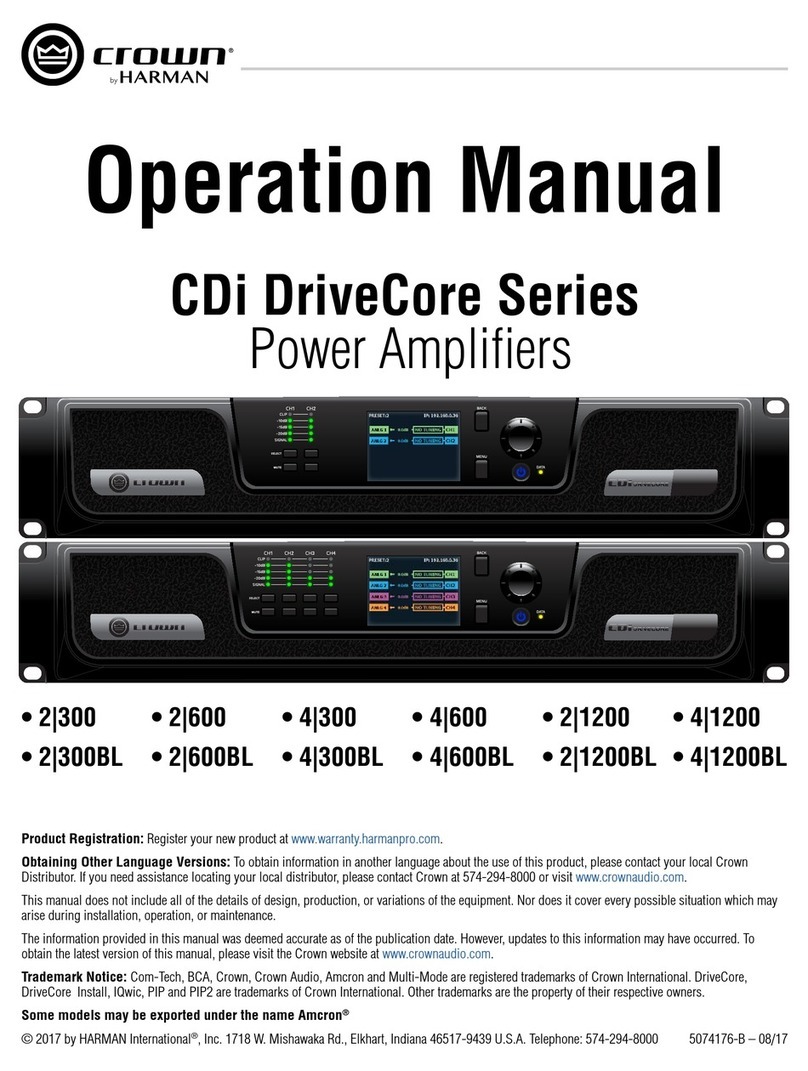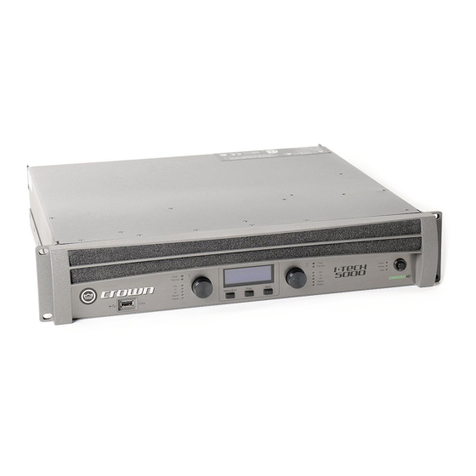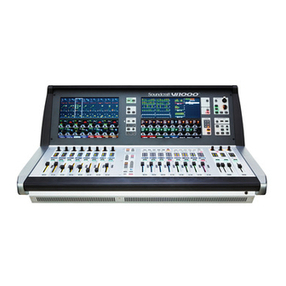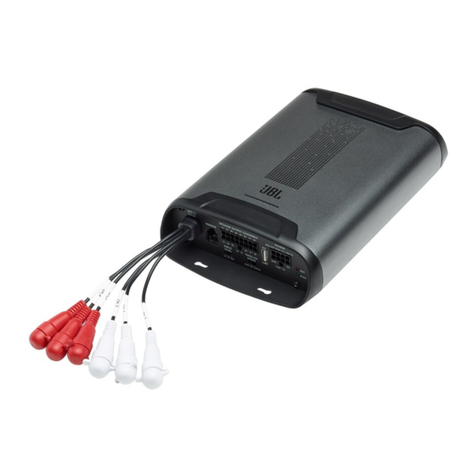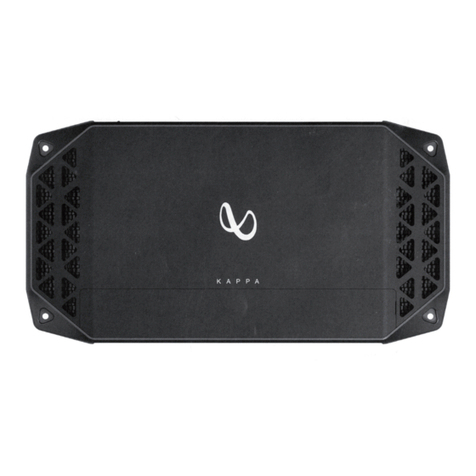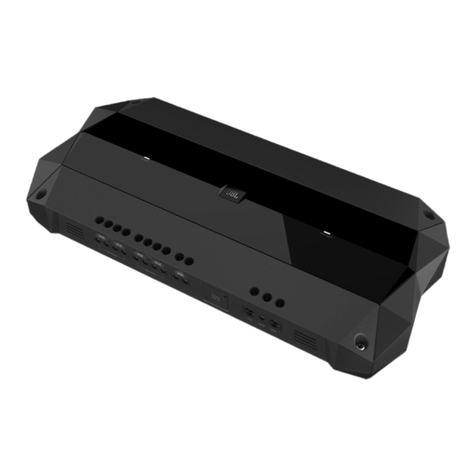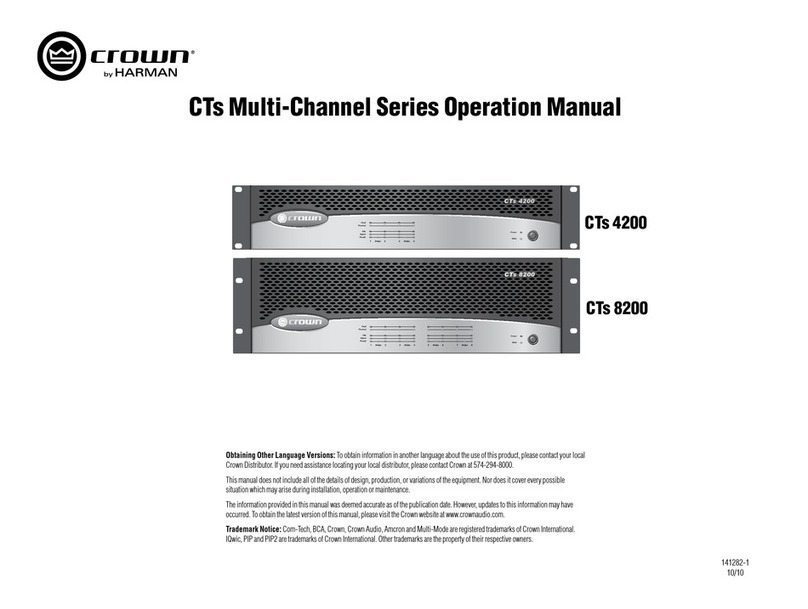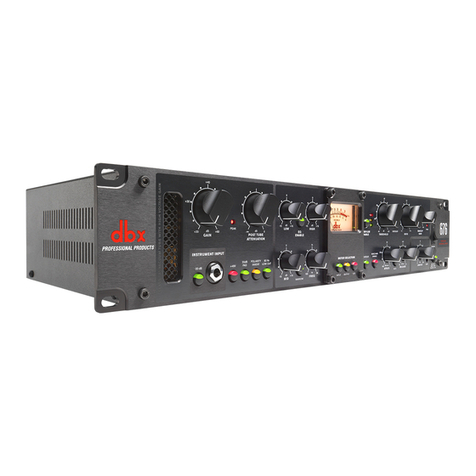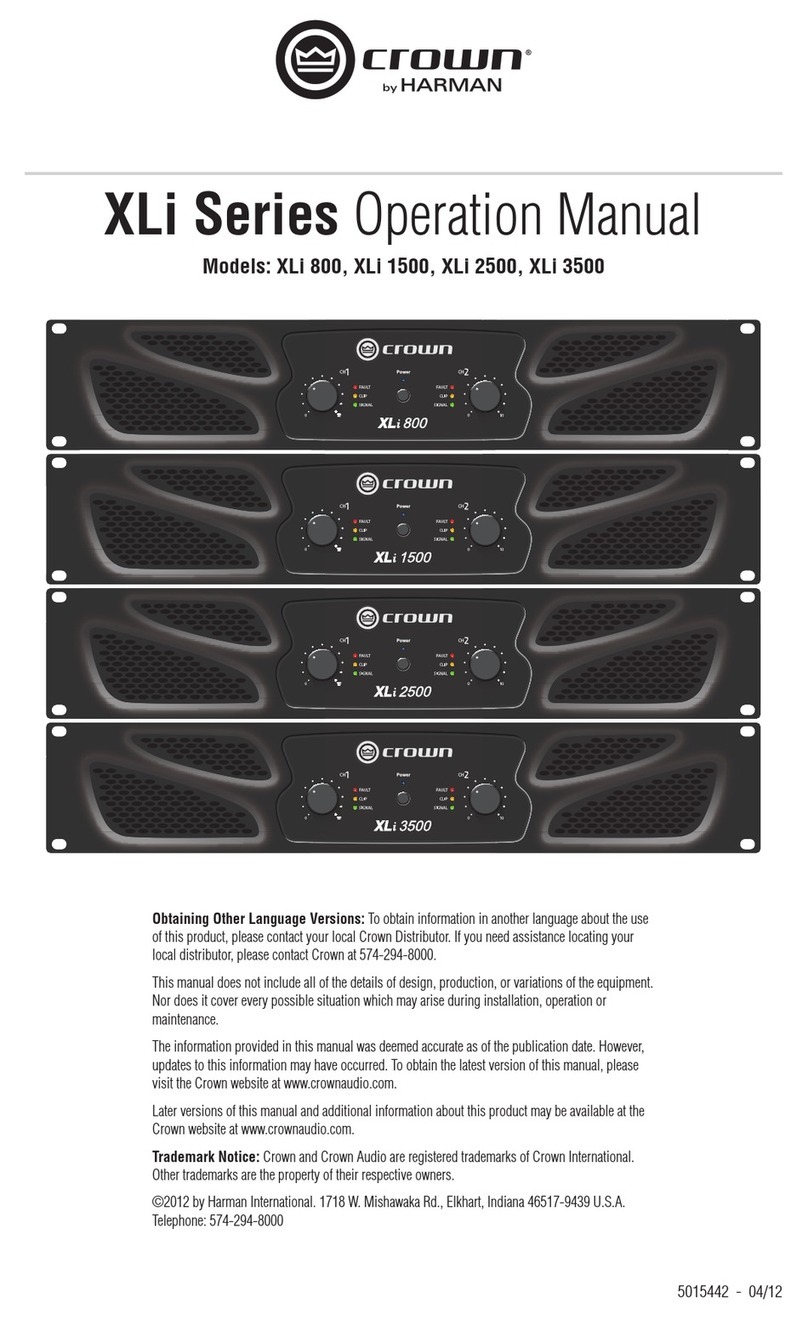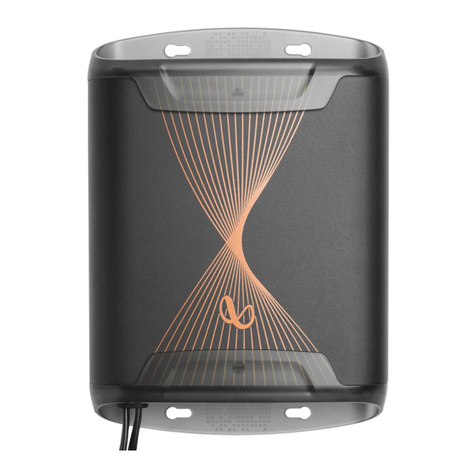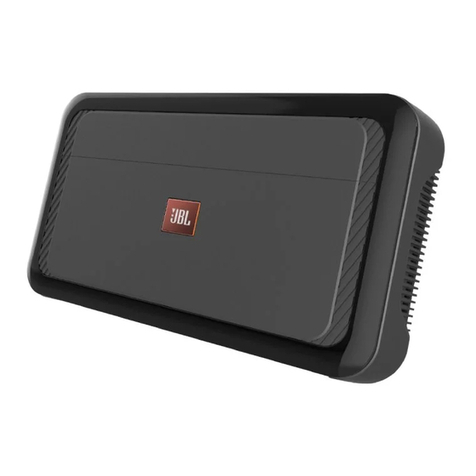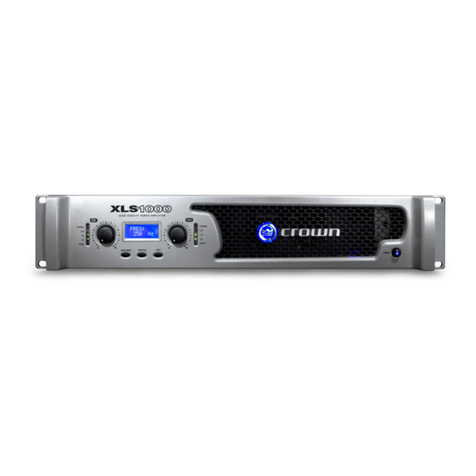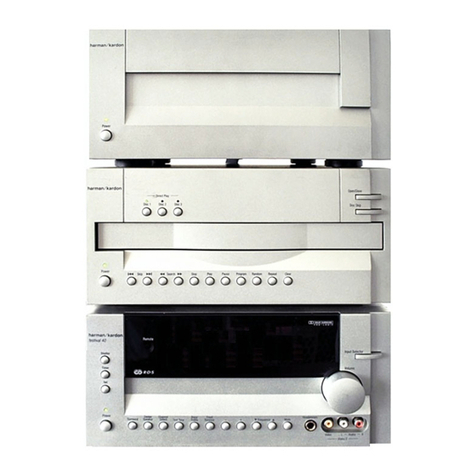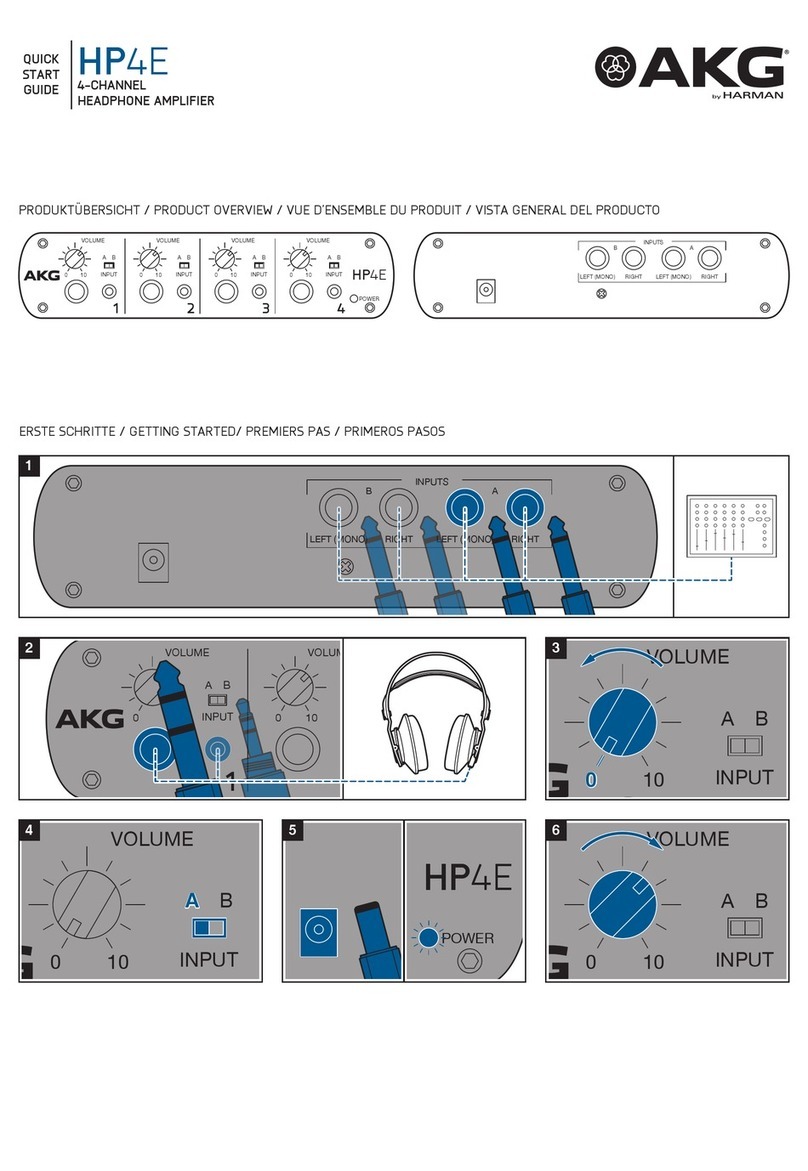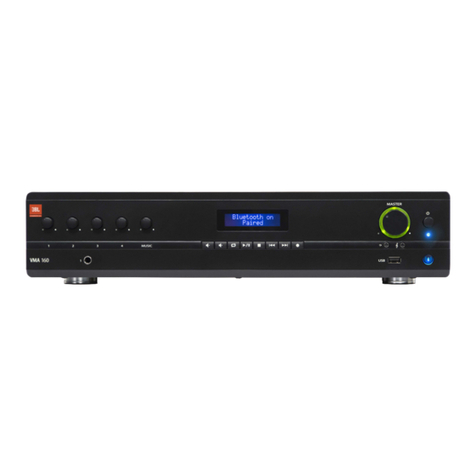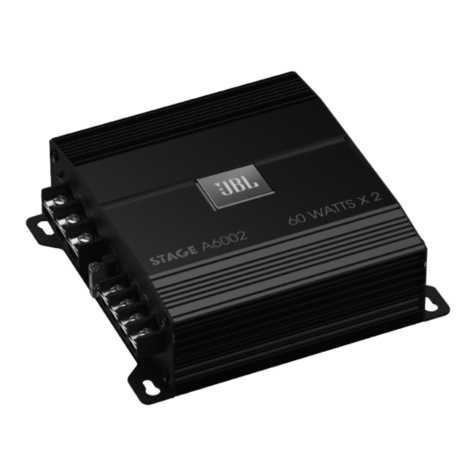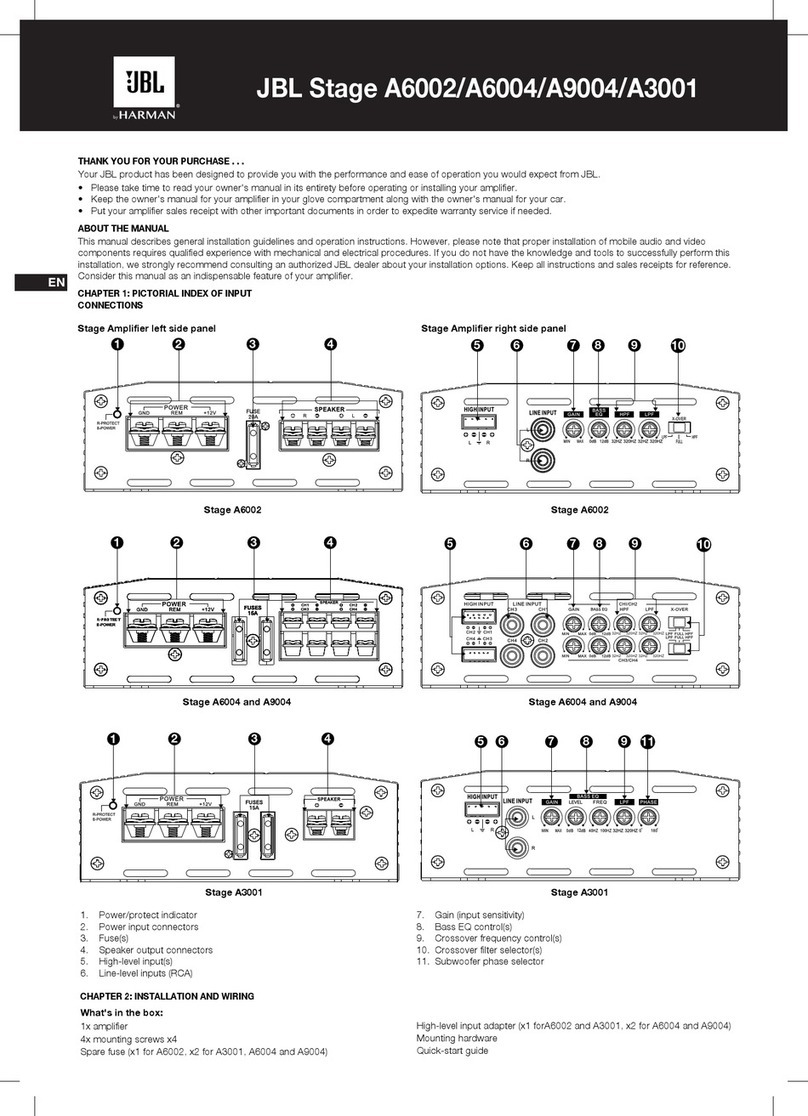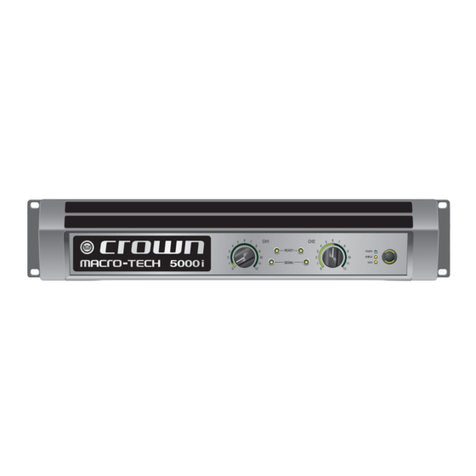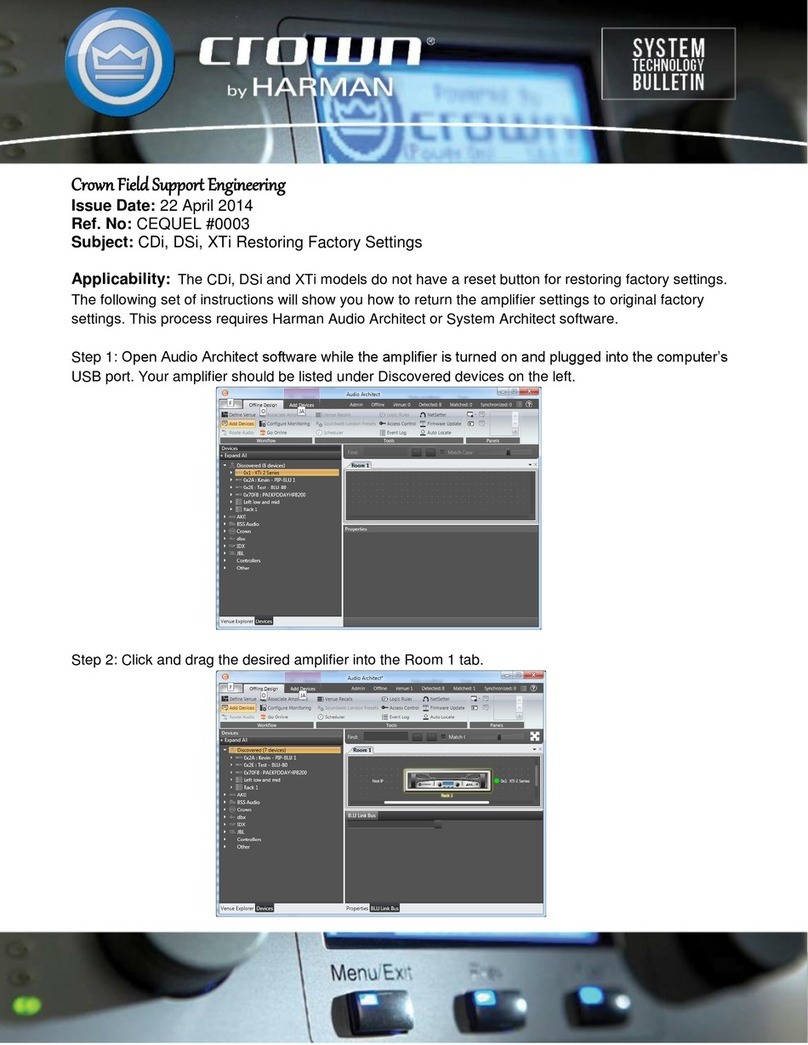
CHAPTER
3:
OPERATIONS
Setting
the
input
levels:
To
match your amplifier's input sensitMty
(gain)
toyour source unit's output
level,
we recommend the following procedure:
A. Tum both input
level
controls counterclockwise to
MIN
{minimum).
B. Play adynamic music track through your source unit. Tum the source unit's
volume control to
the
3/4
position.
C. Tum
the
front input
level
control dial clockwisetowards
MAX
until
you
hear
distortion
in
themusic (It's no longer
clear).
D. Slowly tum
the
front
level
input control dial counterclockwise until the music
soundsclear
again.
E. Your front input
level
isnow correctly set.
Repeat
this process with the
rear
channels.
Setting
the
crossover
Properly setting crossover filter selectors optimizes frequency distribution for
efficient speaker operation and bestsound.
Step
1:
Use
the slider controls to select low-pass
{LPF),
FULL,
or high-pass
{HPF).
•
LPF:
Low
pass.
Choose
this
setting ifyou
are
connecting asubwoofer{s) or
want to provide alow-pass filter for separate mid-bass
speakers.
FULL:
Full
range.
Choose this setting if
you
are
connecting full-range
speakers and
are
not using a subwoofer
in
your system.
•
HPF:
High pass. Choose this setting to prevent lowbass from
reaching
midrange
or
full-range speakers
when
you
are
using
a subwoofer
in
your
system.
Step
2:
Use
crossover-filter frequency controls to adjust crossover point
settings for coaxial speakers and subwoofers to suit listener preference. Tum
the dials to the left
to
lower the crossover point and
to
the right to
raise
the
crossover point. Exact crossover settings for coaxial speakers
and
subwoofers
finally depend on your listening preferences.
NOTE:
crossover point does not
apply
in
FULL
mode.
Selecting
the
subwoofer
phase
With the Stage A3001,
you
can
choose a subwoofer
phase output of
o•
or 180°.
To
check your sub's
phase,
play
music with lots of
bass
and
listen
as
another person slowly turns the dial back
and
forth
between 0
and
180degrees.
The
correct setting isthe
one that
gives
you more bass. If
you
don't detect
any
real
difference, l
eave
the
dial
in
the 0 setting.
CHAPTER 5: SPECIFICATIONS
RMSpower RMSpower RMSbridged
o·
1arf
Total
BassEQ level andfrequency:
You
can
increase the bass output ofyour system with
the
Bass
EQ
feature
upto +12d8. Tum the
LEVEL
dials
to the right
to
increase
the bass output.
The
Stage
3001
A
also
lets you choose the center
frequency ofthe bass boost -
the
frequency that
receives
the most boost effect.
Turn
the
FREQ
dial to
the right to adjust thecenter frequency.
The
frequency
you
choose depends on yourlistening preferences.
CHAPTER
4:
TROUBLESHOOTING
PROBLEM: No audio
and
POWER
INDICATOR
is
off.
LEVEL
OdB
12dB
FREQ
40HZ
100HZ
CAUSE
and
SOLUTION:
No voltage at BATI+ and/or
REM
terminals, or
bad or no ground connection. Check voltages
at
amplifier terminals with
VOM.
PROBLEM: No audio
and
PROTECT
INDICATOR
flashes
every
4
seconds.
CAUSE
and
SOLUTION:
DC
voltage on amplifier output. Amplifier
may
need
service;
see
enclosed warranty card for service information.
PROBLEM: No audio
and
PROTECT
INDICATOR
is
on.
CAUSE
and
SOLUTION:
Amplifier
is
overheated. Make sure amplifier
cooling
is
notblocked at mounting location.
Verify
that speaker-system
impedance is within specified limits.
Or,
there may be
vo~age
greater
than
16V
{or
less
than
8.5V)
on BATI+connection. Check
vehicle
charging
system.
PROBLEM: No audio
and
PROTECT
and
POWER
INDICATORS
flash.
CAUSE
and
SOLUTION:
Vo~age
less
than
gv
on
BATI
+connection.
Check vehicle charging system.
PROBLEM: Distorted audio.
CAUSE
and
SOLUTION:
Gain
is
not set
properly.
Check
INPUT
LEVEL
setting. Checkspeaker
wires
for shorts or grounds. Amplifier or source
unit
may
be defective.
PROBLEM: Distorted audio
and
PROTECT
INDICATOR
flashes.
CAUSE
and
SOLUTION:
Short circuit
in
speaker or
wire.
Remove
speaker
leads
one
at a time to locate shorted speaker or
wire,
and
repair.
PROBLEM: Music lacks dynamics or 'punch.'
CAUSE
and
SOLUTION:
Speakers
are
not connected properly. Check
speaker connections for properpolarity.
PROBLEM: Amplifier
fuse
keeps blowing.
CAUSE
and
PROBLEM:
The
wiring
is
connected incorrectly or there
is
a
short circuit.
Review
installation precautions
and
procedures
in
manual.
Check wiring connections.
PROBLEM:
Engine
noise-whining orclicking-in system
when
the
engine
is
on.
CAUSE
and
PROBLEM:
Amplifie
r is picking up alternator
noise.
Turn
down gain. Move audio cables awayfrom power
wires.
Install
an
alternatornoise filter
on
power
line
between battery and alternator. Check
ground connections on the amplifier since a loose or improper ground
is
one of the
main
causes for extraneous
noise
in
your
audio system.
Frequency
Maximum
high High input
Maximum
Model @4ohms @2ohms power@ 4ohms peak power input signal
maximum
lineinput
response level sensitivity signal level
StageA6002
60W
?OW
140W
280W
20Hz
-
20kHz
@
-1
dB
12V
0.5V
5V
StageA6004
60W
?OW
140W
560W
20Hz
-20kHz@
-1
dB
12V
0.5V
5V
StageA9004
oow
110W
220W
880W
20Hz-
20kHz
@
-1
dB
12V
0.5V
5V
StageA3001
N/A
300W
N/A
600W
1OHz-
320Hz@
-3
dB
12V
0.5V
5V
Line input Line-in
THO+
Nat
Fuse
Operating Quiescent
Model signal maximum signal-to-noiseratio rated power Dimensions
{H
x Wx
D)
Weight
sensitivity (referenceto 1watt)
(20Hz
-
20kHz)
size
voltage currentdraw
Stage
A6002
0.2V
StageA6004
0.2V
StageA9004
0.2V
Stage
A3001
0.2V
~
HARMAN
~
>75dB
>75dB
>75dB
>75dB
HARMAN
International
Industries, Incorporated
8500 Balboa Boulevard,
Northridge, CA91329
USA
www.jbl.com
<1%
20A
95
x
230
x
190
(mm)
1.16kg
9-16V
<1.0A
<1%
2x
15A
95
x
260
x
190
(mm)
1.
381kg
9-16V
<1.2A
<1%
2
X
20A
95
x
325
x
190
(mm)
1.806kg
9-16V
<1.5A
<1%
2
X
15A
95
x
313
x
190
(mm)
1.
609kg
9-16V
<1.5A
©
2018
HARMAN
International Industries, Incorporated.
All
rights
reserved.
JBLis a
trademar\k
of
HARMAN
lntemationallndustries, Incorporated, registered in the
United Statesand/or other countries.
Features,
specifications
and
appearance
are
subject
to
change without notice.
